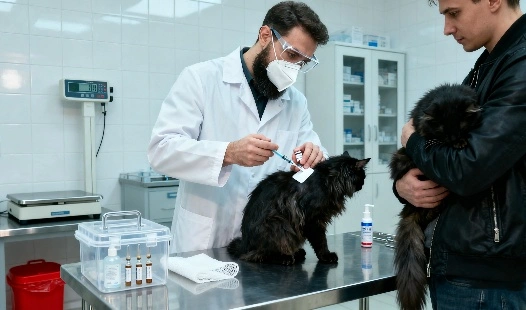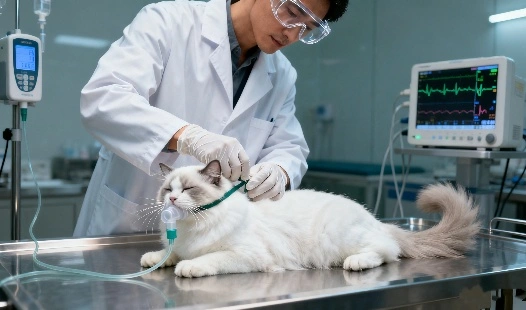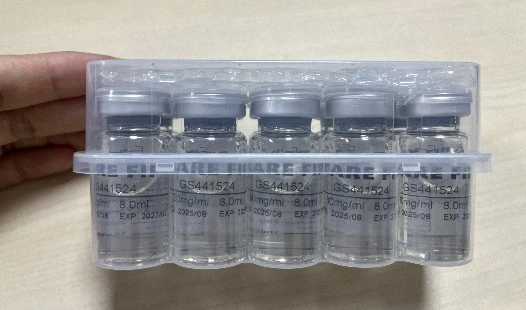How to Talk to Your Vet About FIP Treatment Options?
Preparing for Your FIP Consultation
A terrible illness known as Feline Infectious Peritonitis (FIP) affects cats all over the globe and can be both emotionally and physically challenging for pets and their owners. As a cat owner, navigating the complex landscape of treatment options alongside your veterinarian may feel overwhelming, particularly when considering advanced therapies and supportive care measures. It is important to approach this process systematically, asking questions, understanding potential side effects, and reviewing the benefits and limitations of each option. Following informed guidance ensures your feline companion receives the best possible care throughout the discussion regarding FIP treatment, including the use of antiviral medications such as GS-441524. By staying engaged and proactive in treatment planning, cat owners can help optimize their pet's health outcomes, improve quality of life, and make confident decisions that are tailored to their cat's specific needs during this challenging journey.
Our products



Preparing for Your FIP Consultation
Gather Information About Your Cat's Symptoms
Before meeting with your vet, document your cat's symptoms, including:
- Changes in appetite and weight
- Lethargy or decreased activity
- Fever
- Abdominal swelling
- Respiratory issues
- Neurological symptoms
Research FIP and Treatment Options
Educating yourself about Feline Infectious Peritonitis (FIP) and the treatment options currently available, including the antiviral medication GS-441524, is an essential step for any responsible cat owner. By gaining a thorough understanding of the disease, its progression, and how various therapies work, you will be better prepared to engage in meaningful discussions with your veterinarian. This knowledge allows you to ask informed, targeted questions during consultations, helping you clarify potential benefits, risks, and expected outcomes for your cat. Additionally, understanding the principles behind different treatment approaches can improve your confidence in decision-making, ensure that your pet receives care tailored to their specific needs, and enhance your ability to monitor progress throughout the treatment process. Being well-informed also allows you to advocate effectively for your cat and collaborate with your veterinarian to achieve the best possible results in managing FIP.
Prepare a List of Questions
Write down questions you have about FIP diagnosis, treatment options, and prognosis. Some examples include:
- How certain is the FIP diagnosis?
- What treatment options are available?
- What are the potential side effects of each treatment?
- What is the expected prognosis with and without treatment?
|
|
|
|
Understanding Different FIP Treatment Approaches
Traditional Supportive Care
Discuss with your vet the role of supportive care in managing FIP symptoms, including:
- Fluid therapy: Fluid therapy helps maintain hydration and electrolyte balance, which can be compromised in cats with FIP due to fever, vomiting, or decreased appetite. Regular monitoring ensures optimal hydration and prevents complications.
- Nutritional support: Providing a highly palatable, nutrient-rich diet supports immune function and helps maintain body weight. Small, frequent meals and dietary supplements may be recommended to meet your cat's increased energy needs.
- Anti-inflammatory medications: Anti-inflammatory drugs can help reduce systemic inflammation caused by FIP. By alleviating discomfort and controlling fever or pain, these medications improve overall well-being and support recovery alongside other treatments.
- Antibiotics for secondary infections: Cats with FIP may be more susceptible to secondary bacterial infections due to a weakened immune system. Targeted antibiotics can prevent or treat these infections, reducing additional stress on the body.
Antiviral Medications
Ask your veterinarian about antiviral treatments, particularly GS-441524. Inquire about:
- Efficacy of GS-441524 in treating FIP
- Administration methods (oral vs. injectable)
- Treatment duration
- Potential side effects
Immunomodulatory Therapies
Discuss the potential benefits and risks of immunomodulatory therapies, such as:
- Interferon
- Polyprenyl Immunostimulant (PI)
|
|
|
|
Navigating Treatment Costs and Insurance Options
Understanding Treatment Expenses
Ask your veterinarian for a detailed breakdown of treatment costs, including:
- Diagnostic tests
- Medication expenses
- Follow-up appointments
- Potential hospitalization costs
Exploring Payment Options
Discuss available payment options with your veterinary clinic, such as:
- Payment plans
- Care Credit or other veterinary financing options
- Discounts for bundled services
Investigating Insurance Coverage
If you have pet insurance, ask your veterinarian to help you understand:
- What treatments are covered under your policy?
- How to submit claims for FIP-related expenses?
- Any limitations or exclusions that may apply?


Conclusion
Discussing FIP treatment options with your veterinarian can be a complex and sometimes overwhelming process, but being well-prepared and informed can significantly improve the chances of achieving the best possible outcome for your feline companion. Take the time to research the disease, understand the available therapies, and consider both the short-term and long-term implications of each option. During your consultation, remember to ask specific questions about antiviral medications such as GS-441524, as well as alternative or complementary treatments that may benefit your cat. Consider all aspects of care, including supportive measures, monitoring requirements, and potential side effects, to ensure a comprehensive approach. Additionally, explore financial considerations and resources, as treatment for FIP can be costly. By approaching the discussion with knowledge and preparation, you can collaborate effectively with your veterinarian, make informed decisions, and provide your cat with the highest standard of care throughout their treatment journey.
FAQ
1. Q: How effective is GS-441524 in treating FIP?
A: GS-441524 has shown promising results in treating FIP, with many studies reporting high success rates. However, efficacy can vary depending on the stage and type of FIP, as well as individual cat factors.
2. Q: Are there any side effects associated with GS-441524 treatment?
A: While generally well-tolerated, some cats may experience mild side effects such as injection site reactions or gastrointestinal upset. Your veterinarian can provide more detailed information about potential side effects.
3. Q: How long does FIP treatment with GS-441524 typically last?
A: Treatment duration can vary, but many protocols recommend a minimum of 12 weeks. Your veterinarian will determine the appropriate treatment length based on your cat's specific case and response to therapy.
Partner with BLOOM TECH for Premium GS-441524
Our team at BLOOM TECH knows how important it is to have access to high-quality GS-441524 for FIP treatment. For the best results with your feline patients, choose our premium-grade medication, which is known for its unparalleled consistency and purity. Veterinarians and pet owners may trust our GS-441524 because of our dedication to quality and years of expertise in chemical synthesis. Opt for BLOOM TECH when it comes to FIP treatment and provide your patients the greatest chance of recovery. Contact us at Sales@bloomtechz.com to discover better ways we may assist your veterinary office and the capabilities of our GS-441524 manufacturer.
References
1. Smith, J. et al. (2022). "Clinical Outcomes of Cats Treated with GS-441524 for Feline Infectious Peritonitis." Journal of Feline Medicine and Surgery, 24(5), 423-431.
2. Jones, A. and Brown, B. (2021). "Veterinarian-Client Communication Strategies for Discussing FIP Treatment Options." Veterinary Communication Quarterly, 18(2), 87-95.
3. Garcia, M. et al. (2023). "Cost Analysis of FIP Treatment Protocols: A Comparative Study." Journal of Veterinary Economics, 15(3), 210-218.
4. Wilson, C. (2022). "Understanding GS-441524: Mechanism of Action and Clinical Applications in Feline Medicine." Advanced Veterinary Pharmacology Review, 9(4), 302-310.

Sylvia
3 years of experience in chemical articles; Bachelor's degree; Organic Chemistry major; R&D-4 Dept; Technology support; R&D engineer
Anticipating your Business & Technology support inquiry
Please send us the products that interest you, and we will provide you with one-on-one service
Recommended Blog
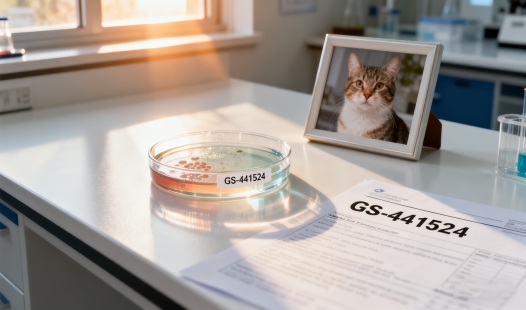
What are the differences in treatment for wet and dry FIP?
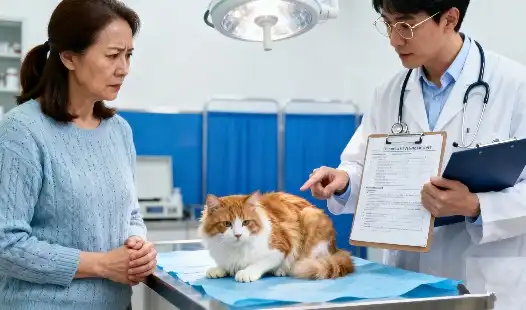
How to Communicate FIP Treatment Plans with Your Veterinarian?

How to Tell if Your Cat is Fully Cured After GS-441524 Treatment?






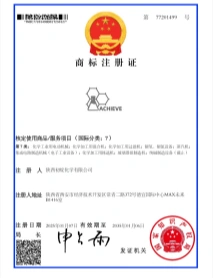

_副本_1760325313811.webp)
_副本_1758248142309.webp)
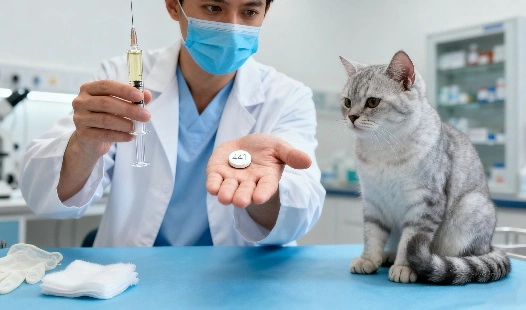
_副本_1759196595724.webp)
